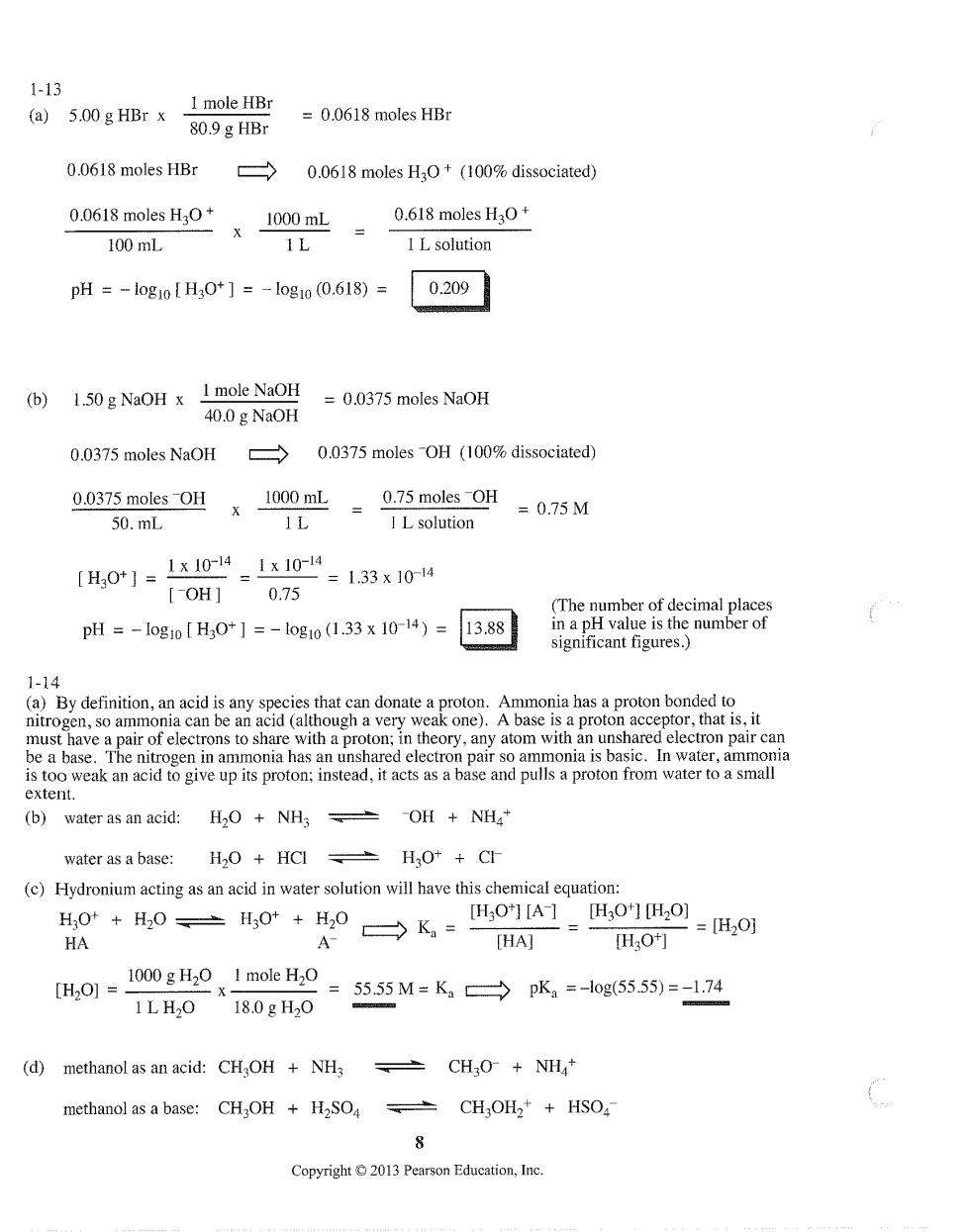正在加载图片...

1-13 1 mole HBr (a)5.00g HBr x 80.9g HBr =0.0618 moles HBr 0.0618 moles HBr → 0.0618 moles HO+(100%dissociated) 0.0618 moles H,0+ 1000mL 0.618 moles H3O 100mL IL solution pH=-l0g1o[H30*]=-log1o(0.618)= 0209 (b)1.50g NaOH x 1 mole NaOH =0.0375 moles NaOH 40.0 g NaOH 0.0375 moles NaOH 0.0375 moles-OH (100%dissociated) 0.0375 moles-OH 1000mL 0.75 moles-OH =0.75M 50.mL. IL IL solution [H,0*1=Lx104 =1x10-14 【OH] =1.33x10-14 0.75 pH=-1og1o[H30*】=-log10(1.33x10-14)= 13.88 1.14 (a)By definition,an acid is any species that can donate a proton.Ammonia has a proton bonded to cid (although a very v par so ammonia is basic.In water,ammonia is too weak an acid to give up its proton:instead,it acts as a base and pulls a proton from water to a small extent. (b)water as an acid:H2O NH3OH NH4* water as a base:H2O HCI HO+Cl (c)Hydronium acting as an acid in water solution will have this chemical equation: H,0 +H0、三H,0+H0→K= [H,O][A】H3O*]H2O] =H20j HA A [HA] HO [H2O]= 1000 g H2O I mole H2O =55.55M=K3→pK2=-l0g(55.55)=-1.74 ILH O 18.0gH20 (d)methanol as an acid:CH2OH NH3 CH3O NH+ methanol as a base:CH3OH H2SO CH,OH2+HSO 8 Copyright2013 Pearson Education,Inc